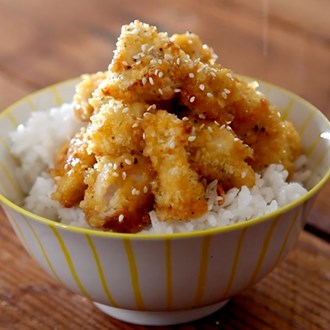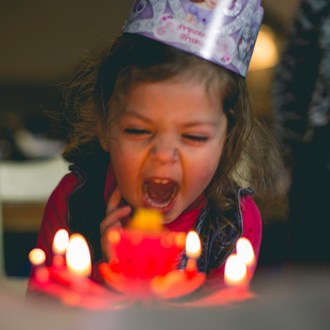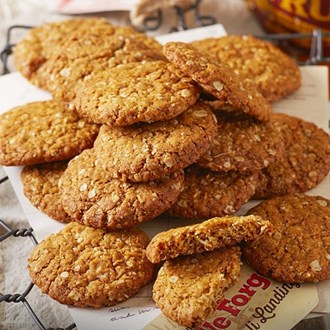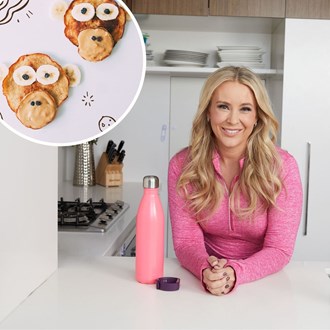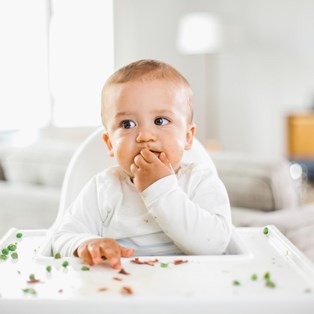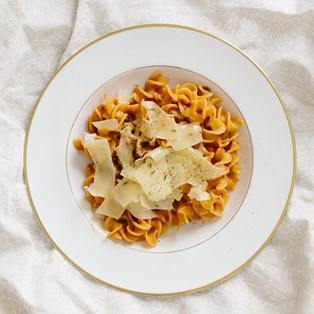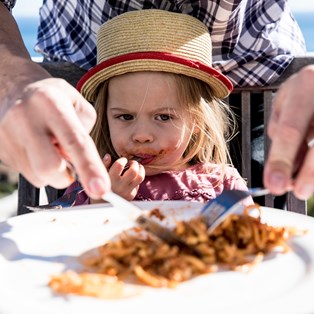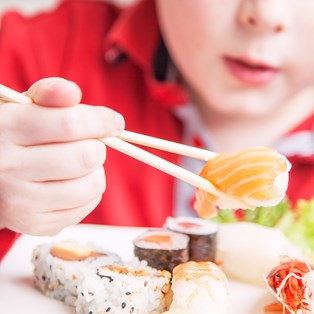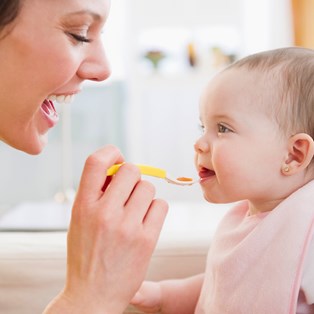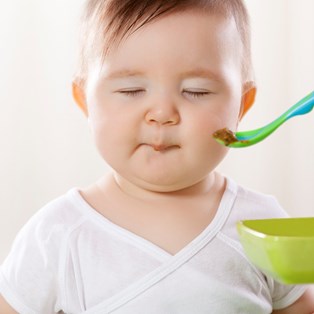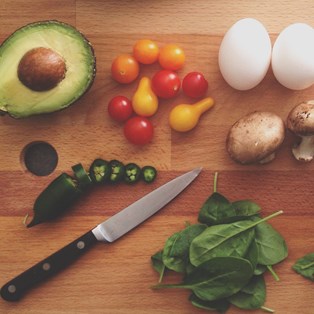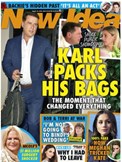Baby Food Recipes: How to Make Baby Food
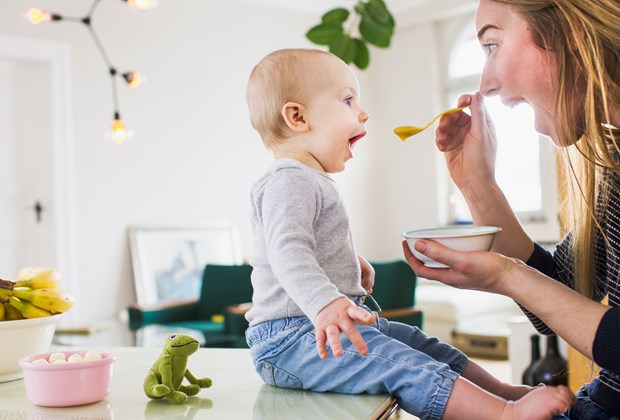
Top 10 recipes for babies
When can I start feeding my baby solid foods?
Once your baby is around six months old he will be ready to start eating his first foods. Signs of readiness include showing interest when other people eat, opening his mouth when he sees food and an increased appetite.
Your little one should also have good head and neck control and be able to sit up without support before eating solid foods. First foods are called ‘complementary feeding’ because they are meant to boost milk feeds initially. When offering first foods, offer breast or bottle feed before solids so bub is more settled and doesn’t fill up his tummy with milk.
Start with one or two teaspoons of solid food at each meal and gradually increase this amount to two to three tablespoons of solids. Begin with simple fruit and vegetable purees and add dairy, grain and meat as your child gets older.
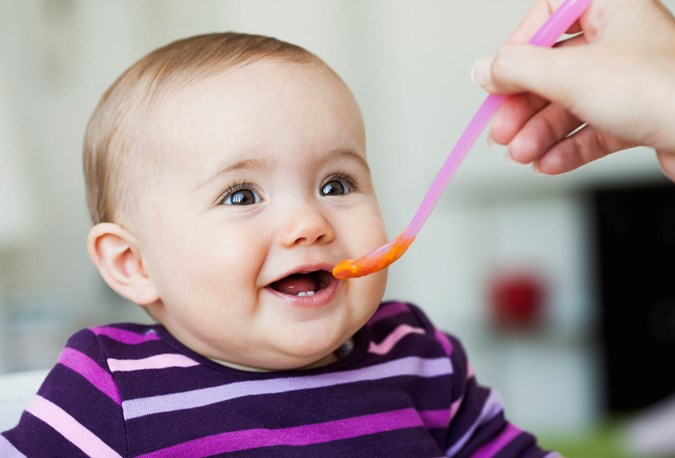
getty images
How much solid food should I offer my baby?
When offering first foods, always breast or bottle feed before solids so bub is in a more settled mood and doesn’t fill his little tummy up before his milk. Begin with around one to two teaspoons of solids after a breast or formula feed, gradually increasing to two to three tablespoons of solids around three times each day.
Are there any precautions I need to take?
To prevent botulism, do not feed honey to babies aged under 12 months. Experts say to include common allergy causing foods in your child’s diet by 12 months. These foods include egg, peanut, wheat, cow's milk, tree nuts, soy, sesame, fish and other seafood. Delaying or avoiding the introduction of these foods may increase the risk of your baby developing an allergy. If you believe your baby has had an allergic reaction to a food, avoid giving that food again and make an appointment to see your doctor.
Should I make my own baby food?
While there are lots of pre-packaged pouches on the market, making your own homemade baby food is easy, cheap and a more nutritious option for your baby, plus any leftovers can be frozen in containers. Here are a few baby food recipes to get you started. Start with baby puree recipes then move onto baby finger food recipes as your baby gets older.
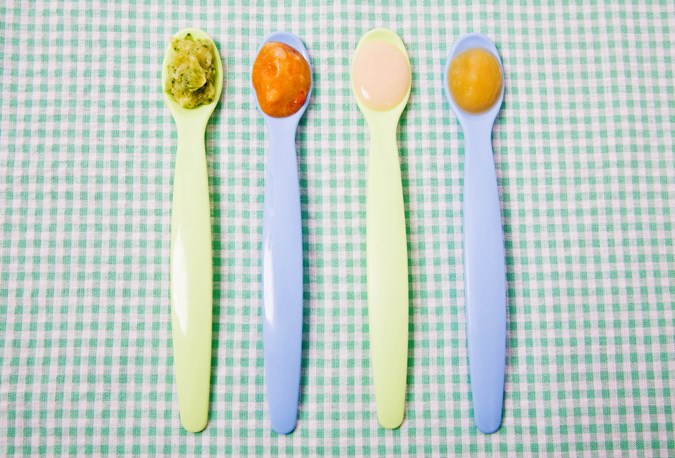
getty images
Root vegetable puree
INGREDIENTS
200g root vegetables such as carrots, parsnips, swedes.
METHOD
1 Peel and roughly chop vegetables. Place in a saucepan, cover with water and cover with a lid.
2 Cook on low heat for about 15 mins or until the vegetables are soft.
3 Strain the water but reserve a little bit of the cooking liquid.
4 Use a blender, stick mix, Thermomix to puree the vegetables while adding a small amount of cooking water to make it the right consistency.
5 Set aside to cool and place the remaining puree in ice cube trays or small containers to freeze.
Fruit compote
INGREDIENTS
1 large peach
2 apricots
1/3 cup water
4 strawberries
METHOD
1 Place the peach in a saucepan of boiling water for 1 min. Remove, rinse under cold water and remove the skin. Chop the flesh. Cut the apricots into quarters.
2 Place the fruit into a saucepan with the water. Bring to the boil, cover and simmer on low heat for 5 mins. Add strawberries and simmer for 2 mins.
3 Remove from heat, blend and leave to cool. Serve immediately or freeze in ice cube trays.
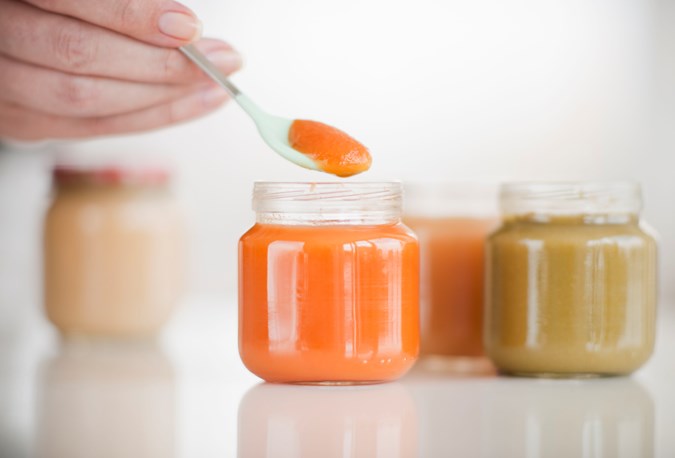
getty images
Egg and avocado
INGREDIENTS
1 egg
1 avocado
METHOD
1 Boil the egg for around 8 mins or until cooked fully. Peel off the shell and separate yolk and white.
2 Mash the yolk with the avocado until smooth. Finely dice the egg white and mix in well.
Banana rice pudding
INGREDIENTS
1 cup cooked brown rice
1/2 banana purée
1/2 cup plain whole milk yoghurt
1/2 teaspoon vanilla
METHOD
1 Add all the ingredients to a saucepan and warm gently on low heat, stirring frequently.
2 Remove the warmed pudding and put it into a food processor, blender or Thermomix and blend to the desired consistency (smooth for younger baby, slightly lumpier for older baby).
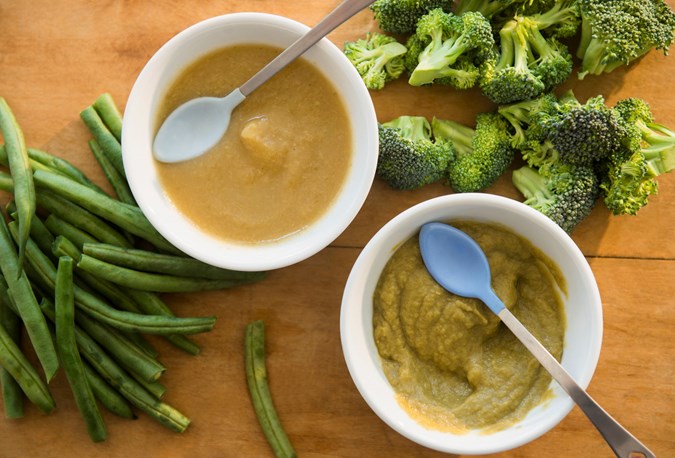
getty images
Broccoli, pear and pea puree
INGREDIENTS
3-4 florets of broccoli
1/2 cup of peas
1 ripe pear
METHOD
1 Place the broccoli and peas in a saucepan of boiling water. Cook for 5 mins or until vegetables are soft.
2 Remove from heat, drain and mash well. Peel the pear and mash into the broccoli mixture, combining well. Serve immediately and freeze any leftovers in ice cube trays.
Frozen berry puree
INGREDIENTS
450g mixed frozen berries
METHOD
1 Combine the berries with ½ cup water in a saucepan. Cook over low heat until berries are tender.
2 Remove from heat, allow to cool slightly then blend. These are great for adding to warm porridge to cool it down and add some extra nutrients.
Red lentil puree
INGREDIENTS
1 cup red lentils, rinsed
METHOD
1 Bring a medium saucepan of water to a boil. Add the lentils and simmer until tender, stirring occasionally, for 12 to 15 mins. Drain the lentils and cool slightly, reserving a small amount of cooking water
2. Transfer the lentils to a blender. Blend until you get the desired consistency, adding the reserved cooking water as needed. Add a light grating of cheese for added protein and flavour.
Homemade baby rusks
INGREDIENTS
2 thick slices bread, crusts removed
Small amount finely grated cheese
1 Preheat oven to 120oC. Cut the slices of bread into three strips. Sprinkle a little grated cheese onto each.
2 Place on a baking tray and bake, turning occasionally for around 1 hour or until dry and crisp. Store in an airtight container for around 4-5 days.
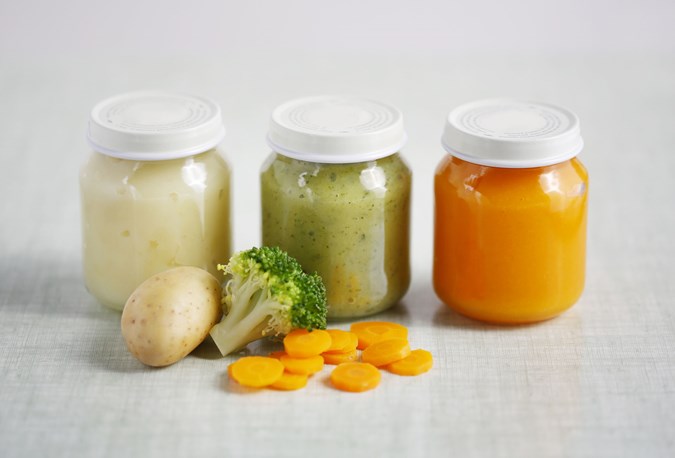
getty images
Sweet potato puree
INGREDIENTS
1 sweet potato
2 tbs butter
2-3 tbsp water
METHOD
1 Peel and roughly dice the sweet potato.
2 Steam until tender, add butter and water and blend to a smooth consistency. Freeze leftovers in ice cube trays.
Papaya Puree
INGREDIENTS
1 large papaya
METHOD
1 Peel the papaya and remove the seeds. Scoop out the flesh into a bowl.
2 Mash until smooth and creamy. Freeze leftovers in ice cube trays.
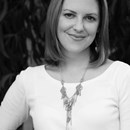
Nicola Conville has worked as a journalist and editor for more than 20 years across a wide range of print and online publications. Her areas of expertise are parenting, health and travel. She has two children; Lucy, age eight, and Nathan, age five.

